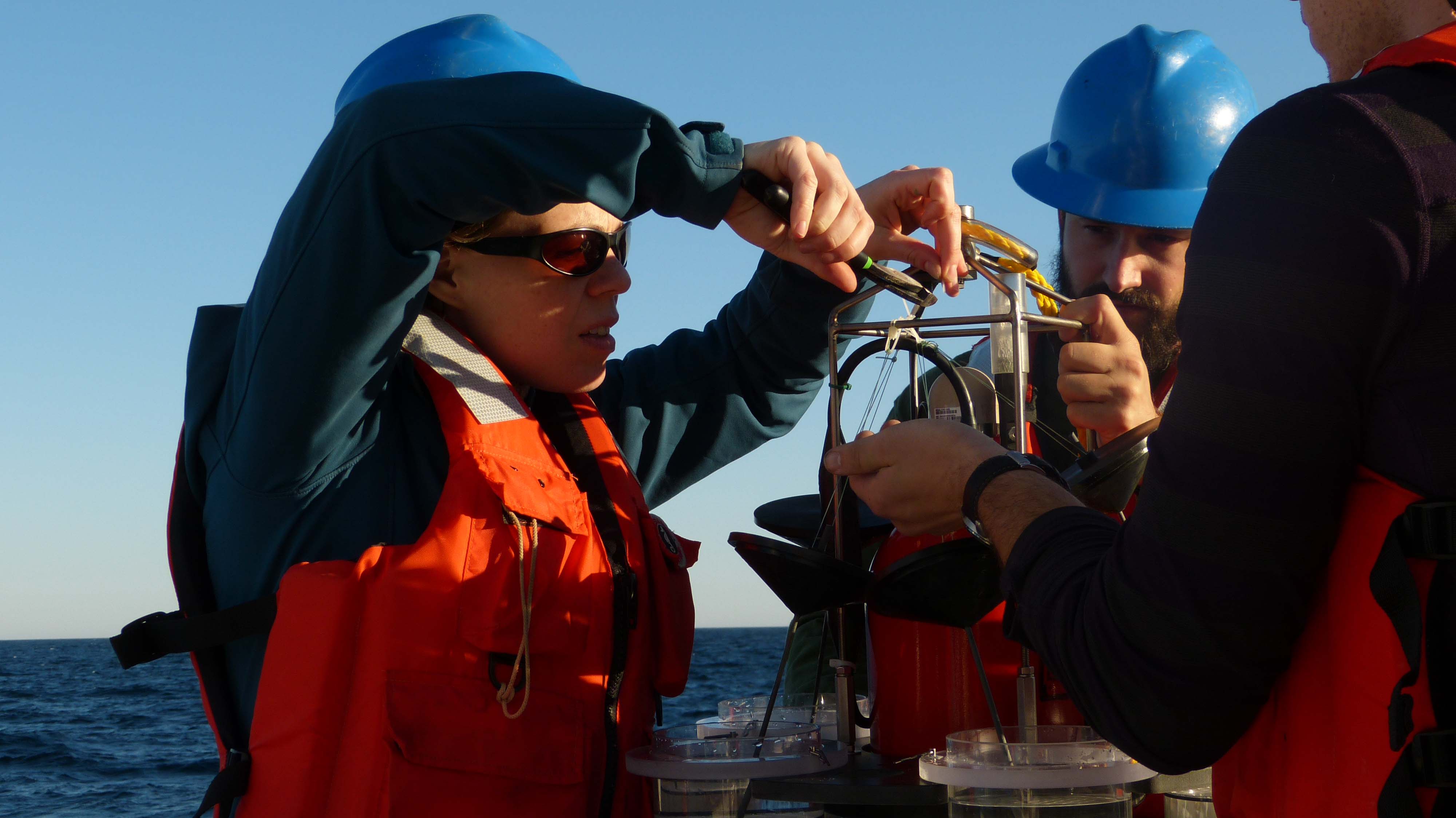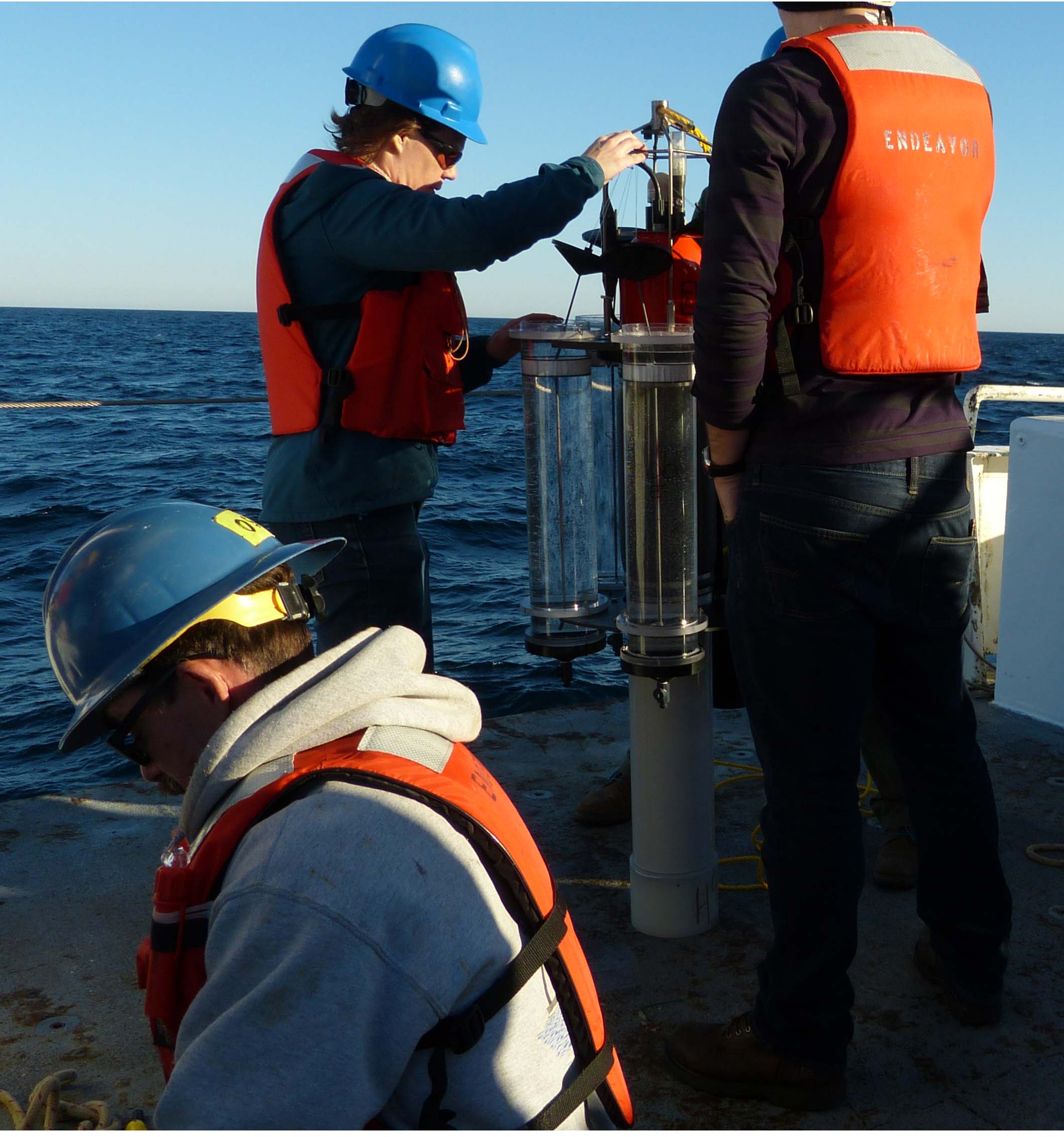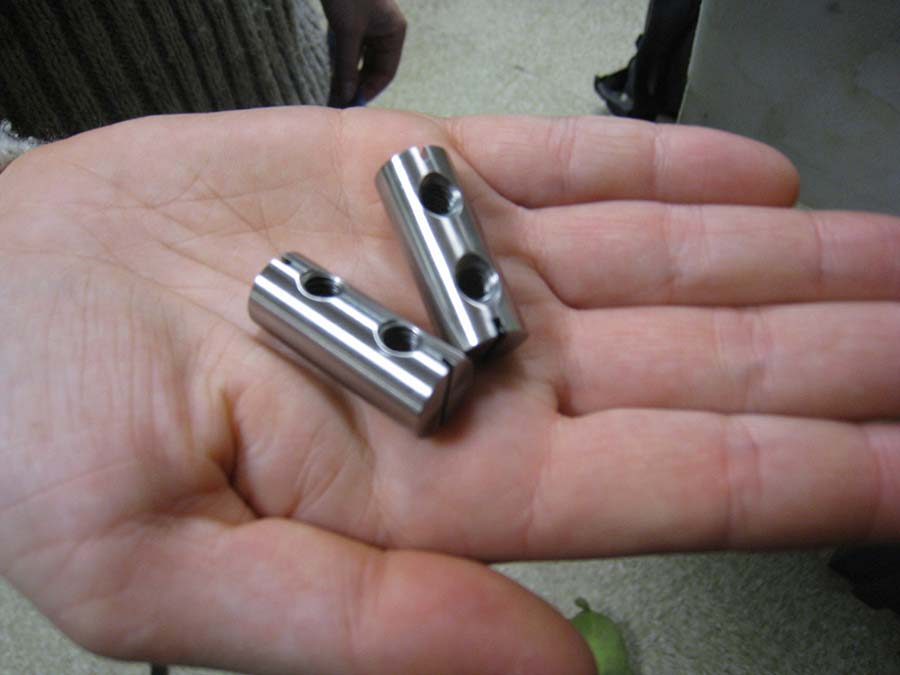On this cruise we are deploying three different types of sediment traps, a remotely operated vehicle, and are recovering a glider. We are also taking water samples from the ship. One of our goals is to determine how best to coordinate these instruments with one another in order to resolve particle flux and the conditions affecting carbon export.
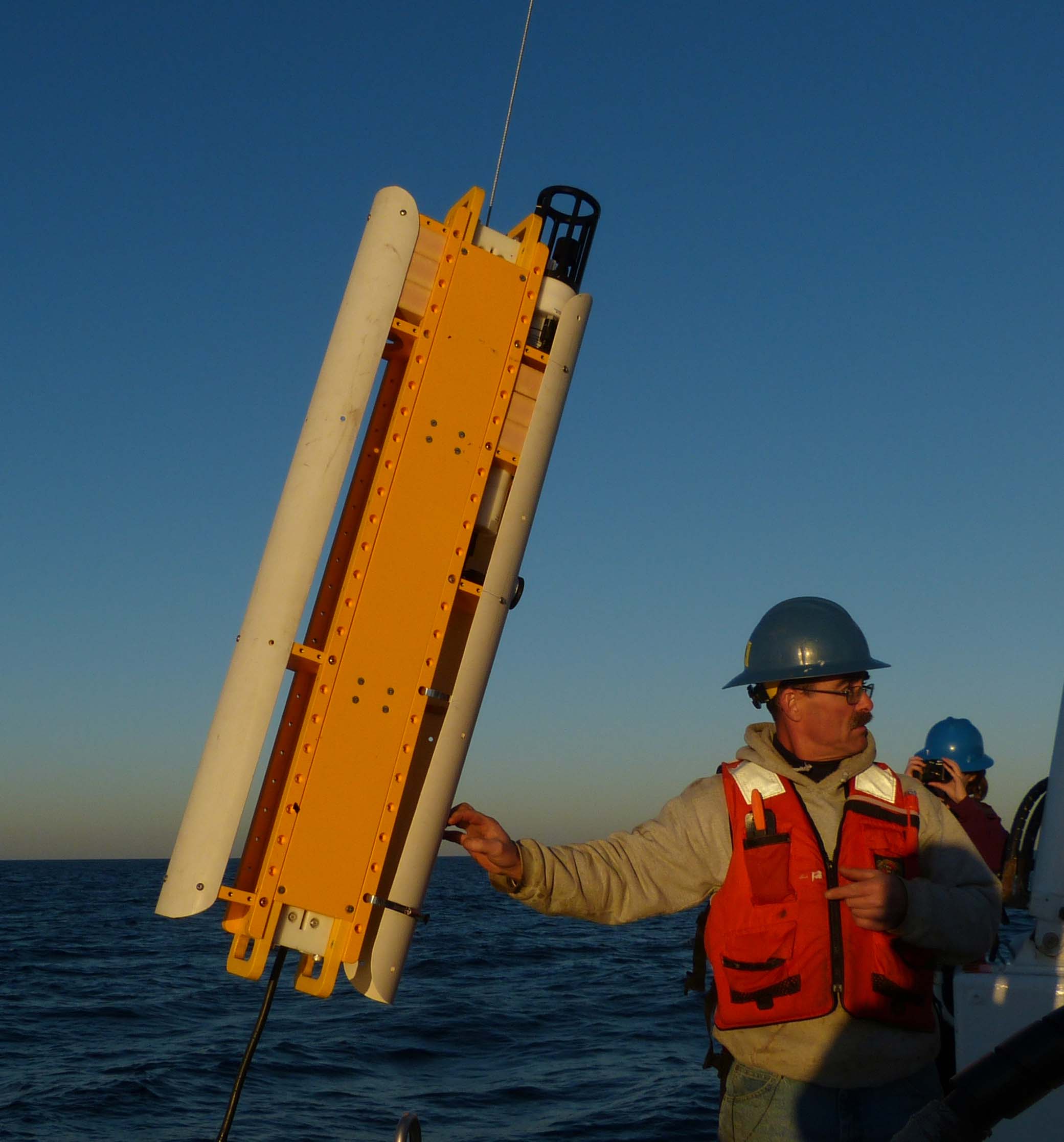
The Wire Walker profiles through the water column while drifting with the currents.
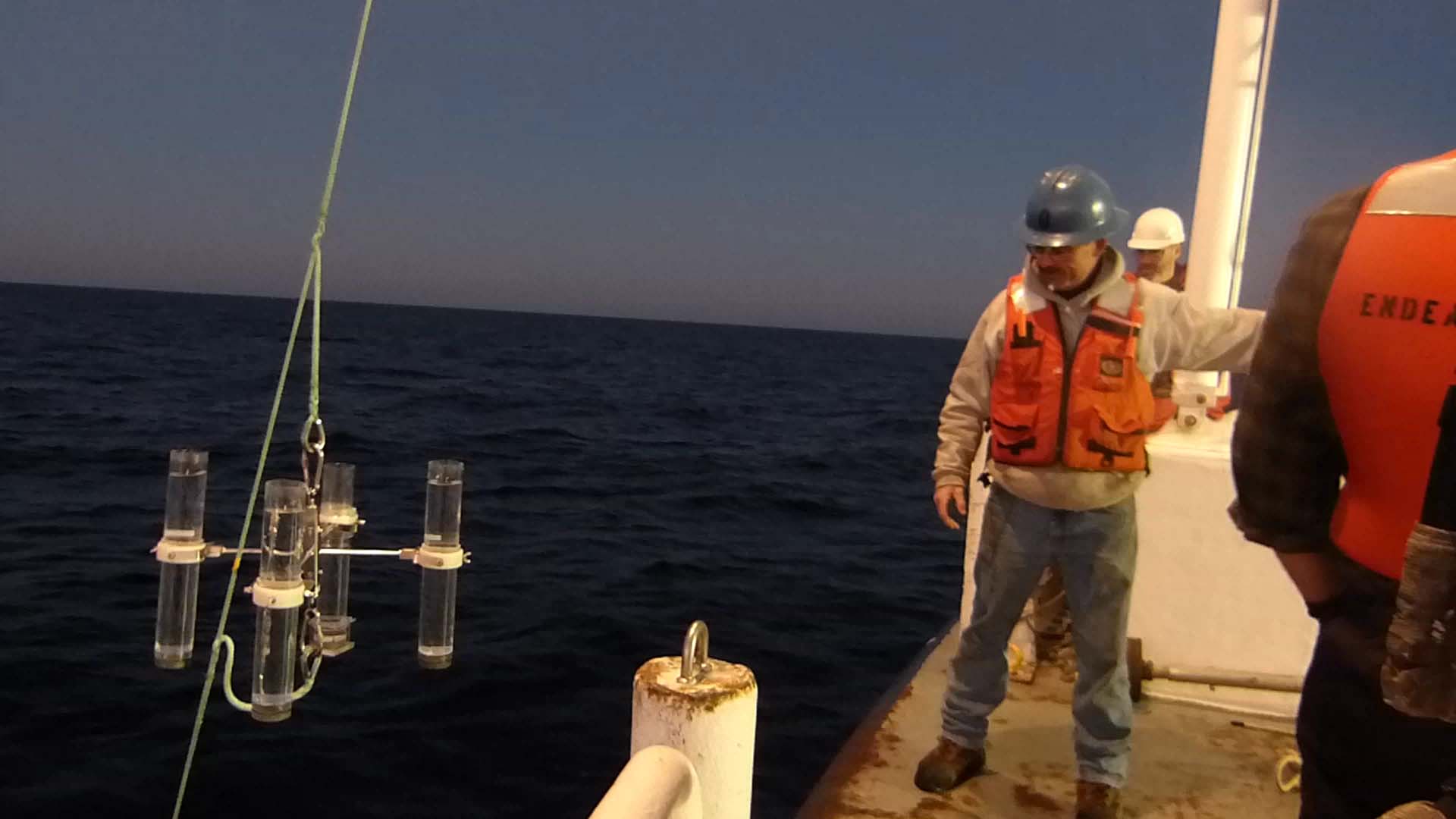
The surface tethered sediment trap collects sinking particles in the tubes tethered to the line at 5 different depths.
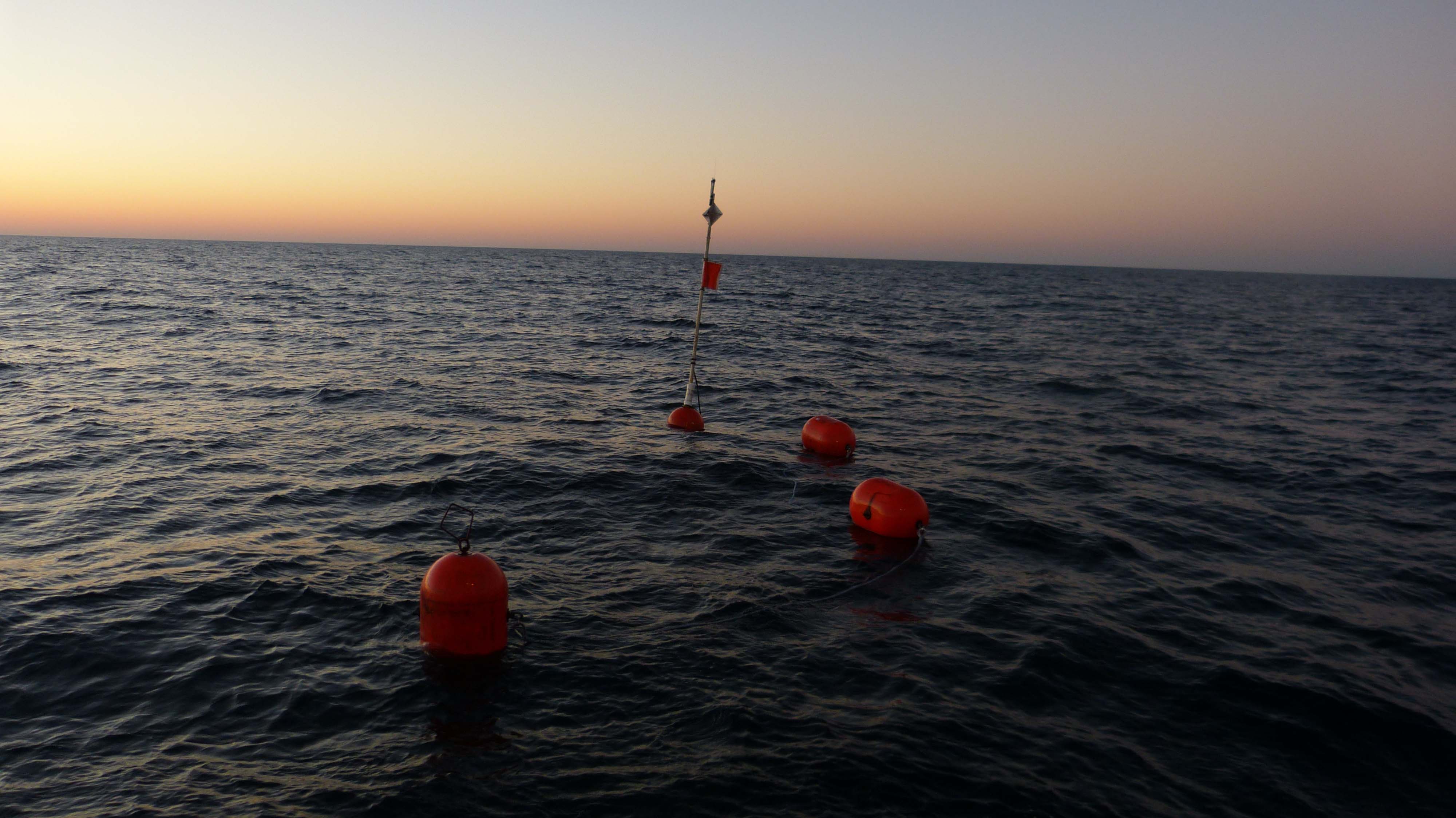
The neutrally buoyant sediment trap (NBST) floats 150 meters deep and measures sinking particles with the collects sinking particles with an optical sensor and also preserves sinking particles in the tubes.
